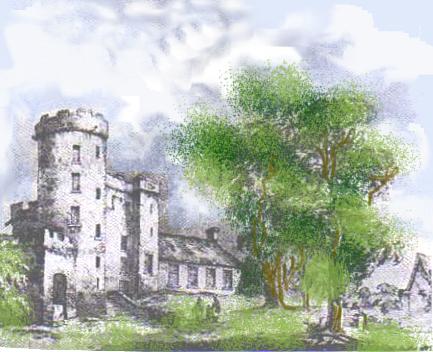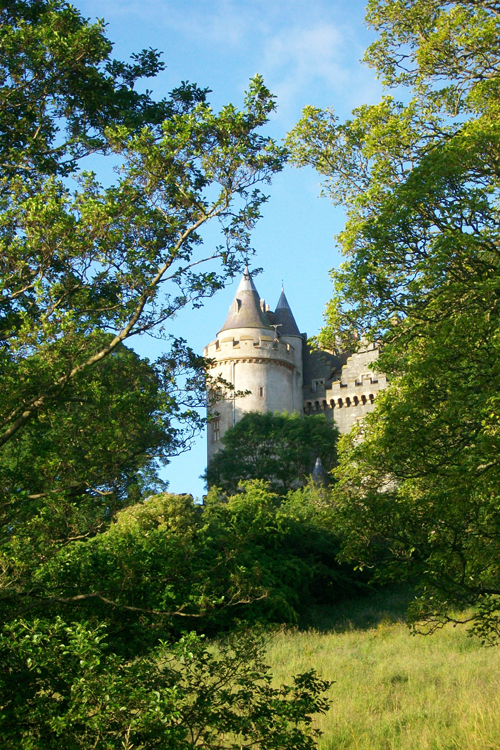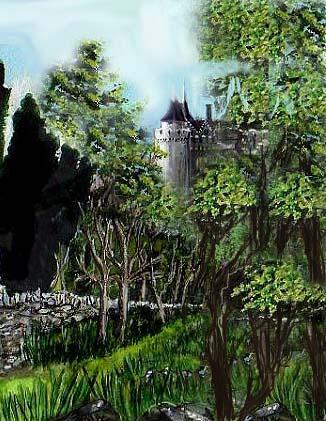| |
The
Harbour | Sir Hans Sloan
| The Famine |
Killyleagh up to 1937 | Images
of Old Killyleagh | 12th
July 2009 |
|||||
Killyleagh lies on the shores of
Strangford Lough, Killyleagh Castle dominates the After the Norman invasion John de Courcy according to Harris's survey of Ireland, 'erected castles on every advantageous site round the shores of the lake, among which the principal was the Castle of Dufferin. In 1356, Edward. III. appointed John De Mandeville, warden of this castle, which subsequently fell into the hands of the O'Nials, who maintained possession of it un till 1561, when the adjoining territory was granted by Elizabeth to Hugo White, who shortly afterwards erected a castle at Killyleagh, into which he removed his warden from Castle Dufferin.' Prior to the plantation of Ireland
the castle and land which had been the the property of Con O'Neill who's
family are said to have lived in the castle without a break for eleven
generations. The McCartan's were similarly disposed of some of their lands, in their case it was Edward Lord Cromwell who benefited. In 1605 Phelomy and Donnell Oge (MacArtan) McCartan were pressurized into parting with one-third of their lands to Edward Lord Cromwell. An agreement was entered into on 12th September 1605, with Edward Lord Cromwell, the governor of Lecale who was at the time the owner of the church lands, which had been formed into the Downpatrick estates: whereby (MacArtan) McCartan granted to Cromwell the third part of all his country called (Killinartie) Kinelarty or in Watertirrye (Kilmegan) or elsewhere, the chief seat of MacArtan (McCartan) excepted, to hold for ever, in consideration of a certain sum of money, and that Lord Cromwell should educate in a gentlemanlike manner his son, Patrick, then aged fourteen years of age. Cromwell appears to have honoured his promise to educate McCartan's son however in 1636 he sold his entire interest in the Kinelarty lands to Mathew Forde, Esq., of Coolegreany, Co. Wexford, for £8,000. This is the estate known today as Fords of Seaforde. Read the full story of the McCartan's on the Drumaroad and Clanvaraghan website. In 1625 Hamilton enclosed the bailey of Killyleagh Castle with a stone wall, the castle was besieged and taken by Gen. Monk for the parliamentary forces in 1648. Henry Hamilton 2nd Earl of Clanbassil restored the castle in 1666 his architect was James Robb. Killyleagh Castle acquired its present appearance when it was converted into the romantic Scottish baronial French mediaeval mismatch designed by Sir Charles Lanyon in the 1850s. It retains its large walled Bawn and entrance. In recent years the castle has hosted some music events, with artists such as Van Morrison In can now be hired as a wedding venue due to the change in the law regarding civil marriages. It claims to be the oldest continually inhabited castle in Ireland, as do several others. Archibald Rowan Hamilton (1757-1834)
a founder member of the Northern The last heir to James Hamilton died in the first world war at Loos in 1915, his daughter sold the property to the present branch of the family at what is reputed to have been a bargain price. Killyleagh's most famous son was Sir Hans Sloan, (1660-1753) physician to George III. He had a long distinguished career traveling widely making many scientific discovery's. He was a member of the new established Royal Institution set up to research new scientific ideas such as Harrison's Chronometer. He set up the Chelsea Physic garden to study plants and their medicinal qualities. At his death he left a vast collection of items of scientific interest, as well as over fifty thousand books and manuscripts. This formed the nucleus of the British Museum established by an act of parliament in 1753 These were purchased for the Nation by money raised by a national lottery and were the foundation of the British Museum and the British Library. You can still see his geology collection in the Natural History Museum and scientific instruments in the Science museum. I is interesting to note that Hans Sloan's collection probably started during his boyhood in Killyleagh. |
|||||
Next
Killyleagh page. |
|

 In
1602 Con O'Neill was imprisoned in Carrickfergus Castle, it would appear
some underhand dealing went on Sir James Hamilton offered to arrange
a pardon for O'Neill in return for some of his land. Exactly what went
on is not entirely clear, what we do know is that Hamilton became the
owner of the castle and lands and this instigated a bitter feud between
himself and Sir James Montgomery a fellow Scottish planter who acquired
much of the Ards peninsular at the same time.
In
1602 Con O'Neill was imprisoned in Carrickfergus Castle, it would appear
some underhand dealing went on Sir James Hamilton offered to arrange
a pardon for O'Neill in return for some of his land. Exactly what went
on is not entirely clear, what we do know is that Hamilton became the
owner of the castle and lands and this instigated a bitter feud between
himself and Sir James Montgomery a fellow Scottish planter who acquired
much of the Ards peninsular at the same time. Whig Club, Belfast (1790) and Secretary of the Dublin committee
Whig Club, Belfast (1790) and Secretary of the Dublin committee